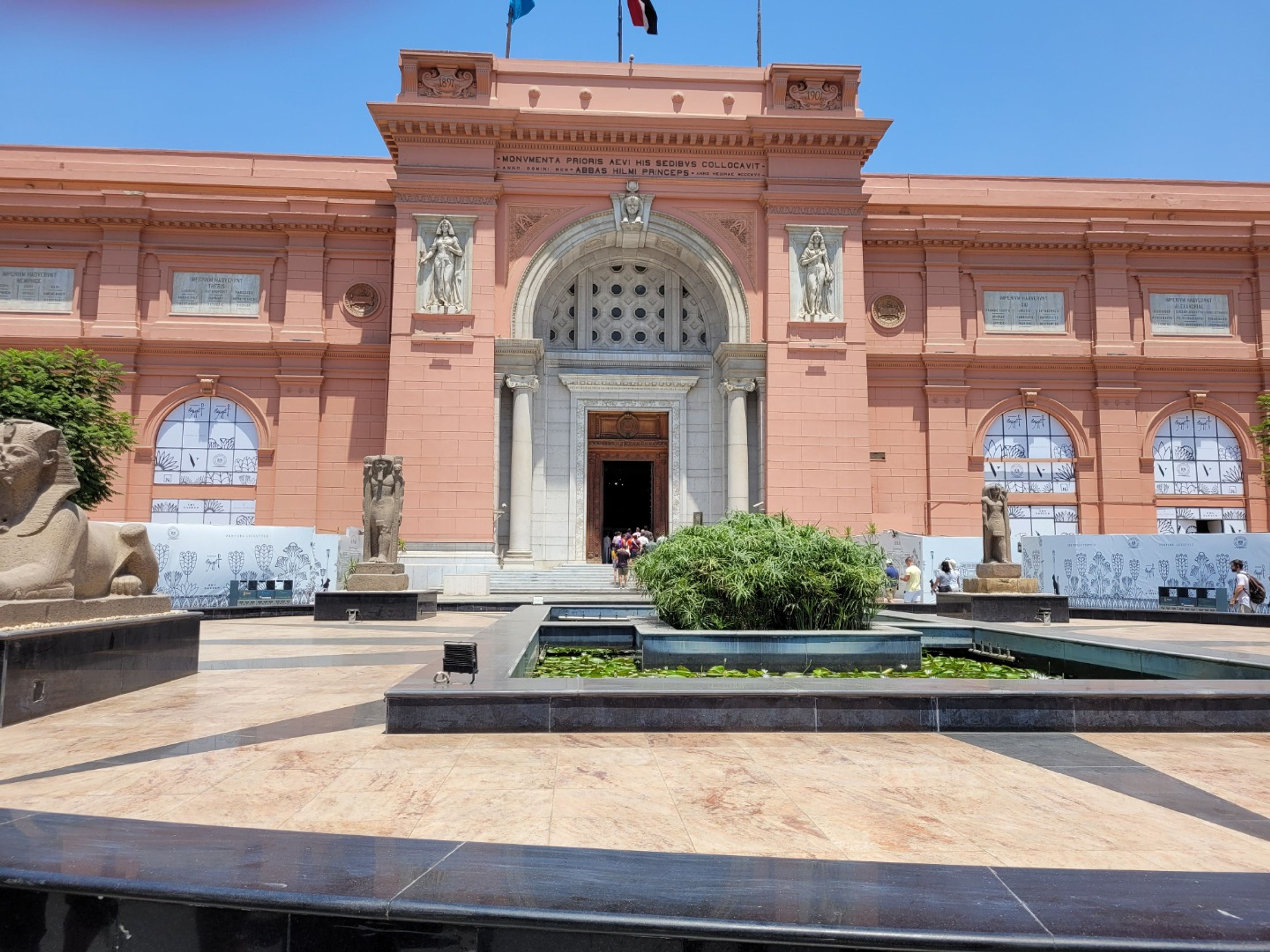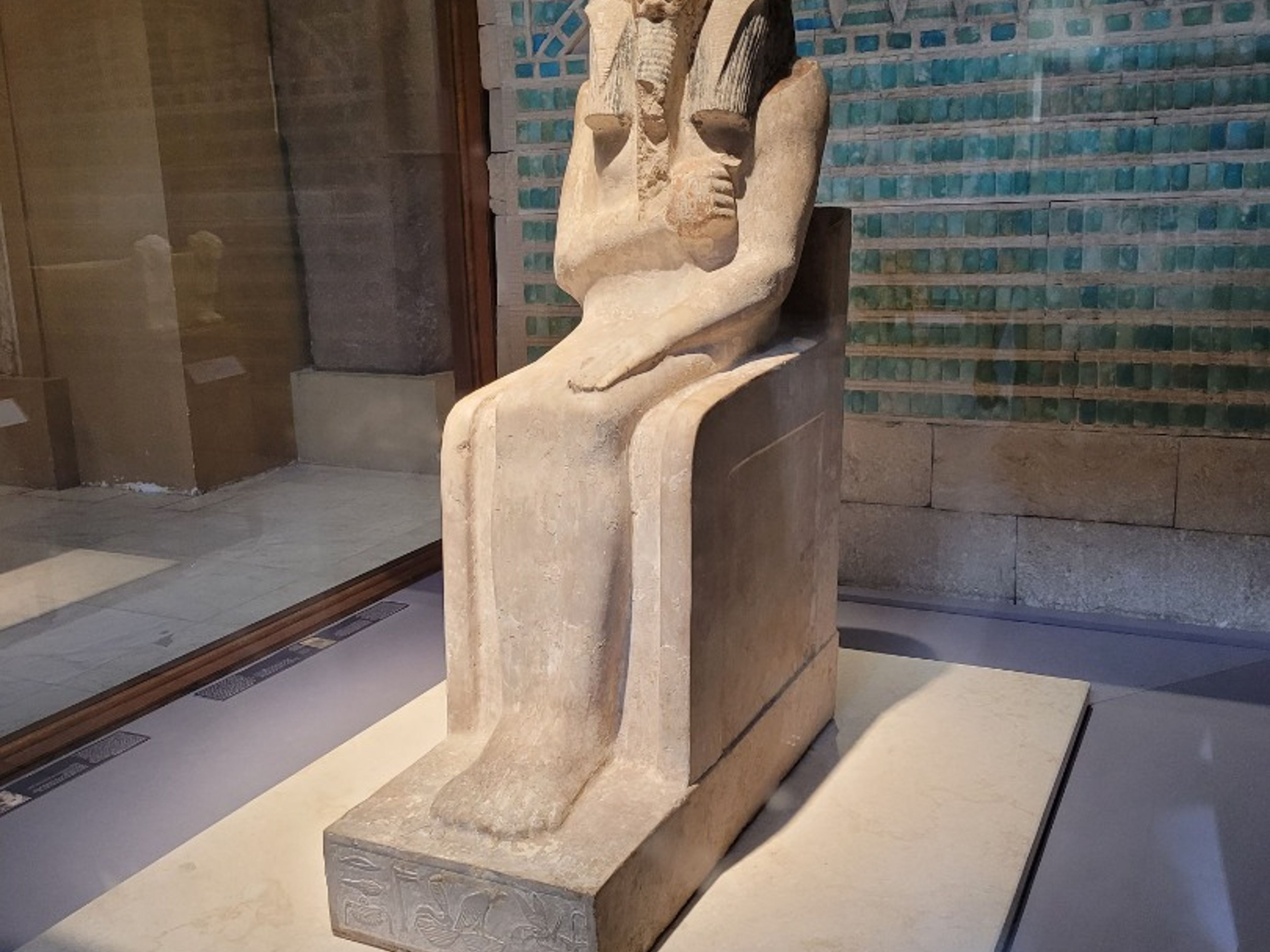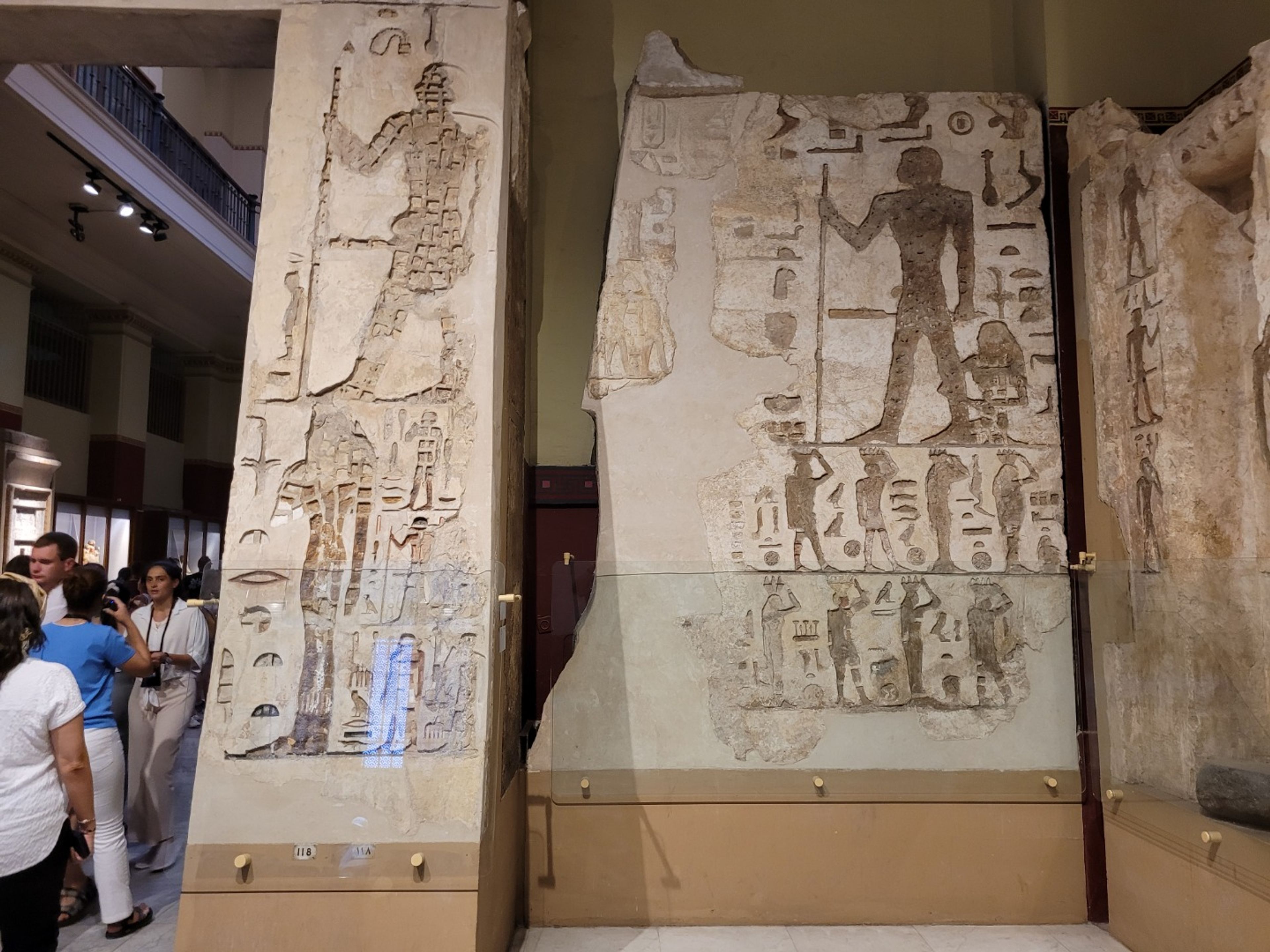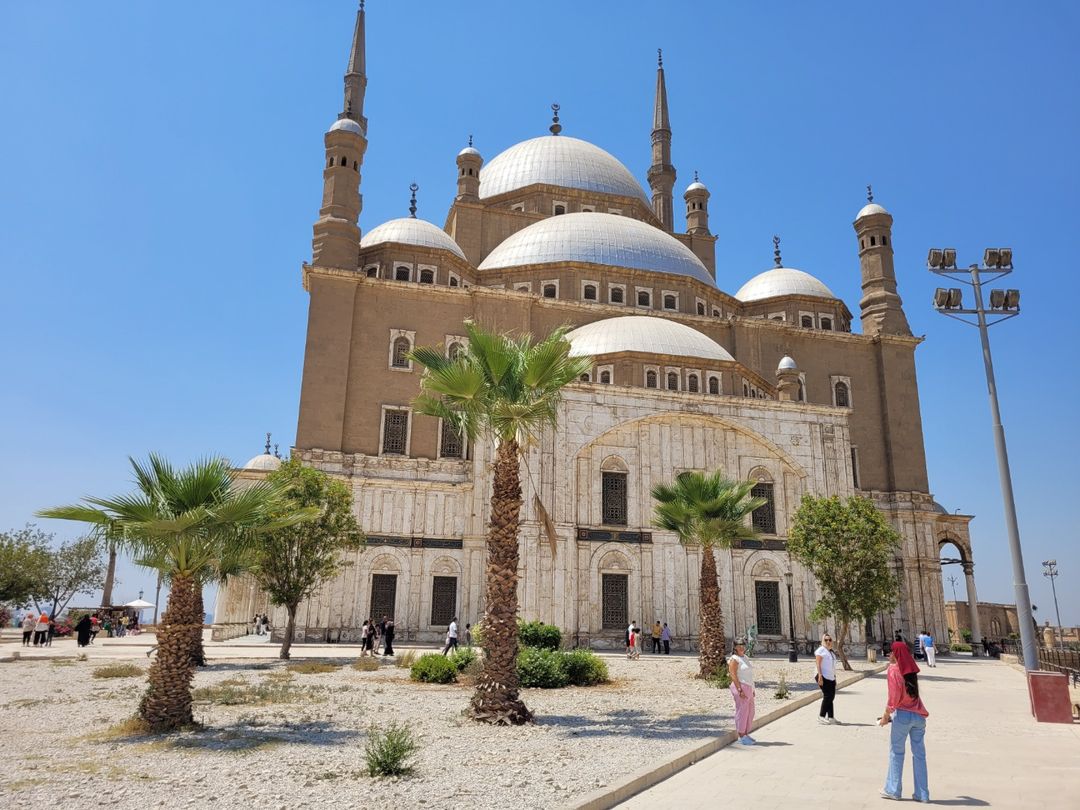"FULL DAY TOURS IN CAIRO (NATIONAL MUSEUM OF EGYPTIAN CIVILIZATION (NMEC) - AL RIFA'I MOSQUE - SULTAN HASAN'S MOSQUE - THE COPTIC QUARTER)" Private Tour





"FULL DAY TOURS IN CAIRO (NATIONAL MUSEUM OF EGYPTIAN CIVILIZATION (NMEC) - AL RIFA'I MOSQUE - SULTAN HASAN'S MOSQUE - THE COPTIC QUARTER)" Private Tour
THE NATIONAL MUSEUM OF EGYPTIAN CIVILIZATION (NMEC): The National Museum of Egyptian Civilization is a groundbreaking institution — the first of its kind in Egypt and the Arab world — dedicated to showcasing the richness, depth, and continuity of Egyptian civilization throughout the ages. More than just a museum, it is a living chronicle of a nation that has shaped the course of human history for over 7,000 years. Through its carefully curated galleries, the NMEC offers visitors a captivating journey across time, from prehistoric Egypt to the modern era, highlighting not only the grandeur of its pharaohs but also the creativity, spirituality, and resilience of its people. One of the museum’s most remarkable attractions is the Royal Mummies Hall, a truly unforgettable experience where visitors come face to face with Egypt’s greatest rulers — including Ramses II and Queen Hatshepsut. Presented in a reverent and immersive environment, this exhibit uses cutting-edge 21st-century technology to reveal the mysteries beneath the wrappings, shedding light on ancient rituals, beliefs, and the science of mummification. With its blend of innovation, history, and reverence, the NMEC is not merely a place to view artifacts — it is a place to connect deeply with the spirit of Egyptian civilization, past and present.
AL RIFA’I MOSQUE: Standing proudly beside the Saladin Citadel, the magnificent Al Rifa’i Mosque is one of Cairo’s most impressive religious monuments and a masterpiece of Islamic architecture. Constructed between 1869 and 1912, this grand mosque was designed to reflect both the spiritual depth of Islam and the royal prestige of modern Egypt. Often referred to as the “Royal Mosque,” it serves as the resting place of numerous members of the Egyptian royal family, including King Farouk, the last reigning monarch of Egypt, as well as the exiled Shah of Iran, Mohammad Reza Pahlavi. Its majestic interior — adorned with ornate marble, intricate mosaics, and towering columns — creates an atmosphere of serenity and reverence that captivates every visitor. Beyond its religious significance, Al Rifa’i Mosque represents a fusion of Ottoman and Mamluk architectural styles, harmoniously blending history and modernity. Visiting this mosque offers not only a glimpse into Egypt’s royal past but also a moment of reflection amidst the timeless beauty of Islamic art.
SULTAN HASSAN MOSQUE: Built in the mid-14th century by order of Sultan Hassan, this monumental masterpiece stands as one of the finest examples of Mamluk architecture and one of the most remarkable Islamic monuments in the world. Rising majestically at the foot of the Saladin Citadel, the Sultan Hassan Mosque and Madrasa is a true architectural marvel that continues to inspire awe centuries after its construction. The mosque’s massive stone façade, towering minarets, and intricately carved portals reflect the grandeur and ambition of its founder. Inside, visitors are greeted by an immense open courtyard surrounded by four majestic iwans, each representing one of the four schools of Islamic law. The central ablution fountain, bathed in soft light filtering through the arches, creates a serene and spiritual atmosphere. More than a place of worship, the mosque was conceived as a center of learning, housing classrooms and accommodations for students of theology. Its harmonious proportions and rich ornamentation make it a masterpiece of design and engineering — a testament to Cairo’s golden age as a beacon of Islamic culture. Facing directly the elegant Al Rifa’i Mosque, together they form one of Cairo’s most breathtaking architectural.
THE COPTIC QUARTER: Step back in time as you wander through Cairo’s Coptic Quarter, one of the city’s most sacred and historically rich neighborhoods. Nestled within the walls of Old Cairo, this enchanting district preserves the spiritual heritage of Egypt’s Christian community, whose roots trace back to the earliest centuries of Christianity. Here, ancient churches, synagogues, and fortresses tell stories that span millennia — of faith, refuge, and divine encounters. Among its most revered sites is the Church of St. Sergius and Bacchus (Abu Serga), believed to stand over the very crypt where the Holy Family sought shelter during their flight into Egypt. This sacred space offers visitors a profound sense of peace and connection to one of the most cherished chapters of biblical history. Nearby, the Ben Ezra Synagogue — one of the oldest in Egypt — holds its own legends. According to tradition, it marks the spot where the infant Moses was discovered among the reeds of the Nile, a story that bridges the shared spiritual heritage of Judaism, Christianity, and Islam. Strolling through the narrow cobblestone lanes, visitors encounter timeless icons, ancient frescoes, and beautifully restored sanctuaries, each whispering tales of endurance and faith. The Coptic Quarter is not just a place to visit — it is a journey into the living soul of Egypt’s religious history, where every stone and relic bears witness to centuries of devotion and coexistence.
Guided by our expert Egyptologists, you will uncover fascinating secrets, timeless myths, and extraordinary architectural details that bring these colossal monuments to life — transforming them from mere stone structures into a living story carved by the hands of history. Through the eyes of your guide, the mysteries of ancient Egypt will unfold before you — revealing not only the grandeur of its kings and builders but also the deep symbolism, precision, and spiritual vision that made their creations eternal.
Itinerary
-
Pick up at your hotel, or the one closest to your accommodation by a guide from our agency.
-
Visit to the National Museum Of Egyptian Civilization (NMEC).
-
Visit to the Saladin Citadel and the Al Rifa'i Mosque.
-
Visit to the Sultan Hassan Mosque.
-
Visit to the Coptic Quarter.
-
Return to the hotels.
-
All visits to the different facilities and museums have the presence of a specialist who will guide our tour, explaining in detail the meanings and history of the different attractions that we can observe.
The tour includes
- Spanish-speaking guide service.
- All transfers from and to the hotel in modern, air-conditioned private coaches.
- All information on all the aforementioned visits.
- Special treatment and elite service.
The tour does not include
- Professional guide in English, French, Portuguese, German and Italian languages. If you want a guide in these languages, it is done on request and an extra charge must be paid.
- Extras not mentioned in the program.
- Personal expenses and tips.
- Lunch and drinks during visits.
• It is recommended to wear light clothing, sunglasses, caps or hats, sneakers or sandals, sunscreen, and a camera. • It is recommended to bring at least a bottle of water, light meals with sweets, and snacks.
More Information
- 6 hrs aprox
- Flexible schedule depending on customer preference.
- Tour guide included
- Family friendly
- Offered inSpanish
Options and Availability
Private tour (from 2 to 5 pax)
Private tour with exclusive guide service in your language. Pick-up time and itinerary tailored to your interests.Private tour (from 6 to 20 pax)
Private tour with exclusive guide service in your language. Pick-up time and itinerary tailored to your interests.Policies and Conditions
- This tour operates with a minimum of 2 passengers, Holiplus will reconfirm 48 hours before departure. If the supplier decides to cancel, for reasons of force majeure or adverse weather conditions, Holiplus will offer an alternative tour or will fully refund the cost of your trip.
- Rates are expressed in US dollars (USD) and may be changed without prior notice.
- The services and programs can be changed or canceled in their execution, sequence and content; in order to offer a better service, or due to extreme conditions or force majeure reasons.
- The client must be aware that modifications in the original reservation may generate changes in the final price.
Cancellation and no show policy:
- Cancellations more than 72 hours before the excursion: No penalty applies.
- Cancellations between 72 hours and 48 hours before the excursion: a penalty of 25% of the total value of the excursion applies.
- Cancellations less than 48 hours before the excursion: a penalty of 50% of the total value of the excursion applies.
- NO-SHOW: a penalty of 100% of the total value of the excursion applies.
- Reservation fees and credit card surcharges cannot be refunded in case of cancellation.


